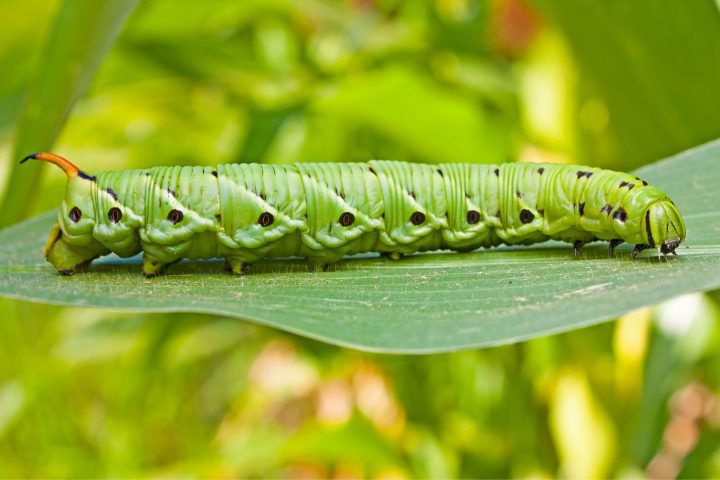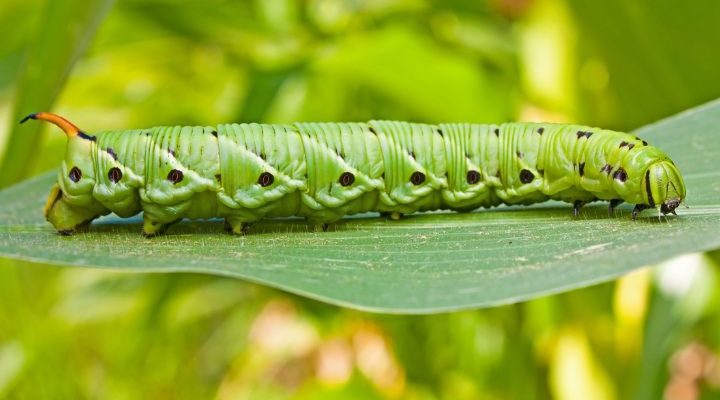
Let’s break this down. Hornworms don’t exactly pack their bags and take off for a vacation; instead, they follow a predictable cycle that depends on various environmental factors. You might be curious about how they survive the winter or if they will return to your garden once summer rolls around again. Spoiler alert: the answer isn’t as cut and dry as you might think. So, let’s dive into the world of hornworms and find out what to expect each year!
Understanding the Hornworm Life Cycle
Hornworms start their life as eggs, laid by adult moths. These moths are often active during warm months, meaning you’ll likely see hornworms in your garden from late spring to early fall. Once the eggs hatch, the tiny caterpillars emerge, and it’s time for them to eat—often your favorite plants. They go through several stages, known as instars, and it’s during these times that they grow significantly larger, developing the infamous horn that gives them their name.
After a few weeks of munching away, hornworms enter the pupal stage. This is where they transform into moths. They typically bury themselves in the soil or find a sheltered spot to undergo this metamorphosis. If conditions are right, you could see these moths again in just a few weeks, but it’s their ability to survive winter that really adds to the mystery of whether hornworms come back each year.
Do Hornworms Survive Winter?
You might be wondering what happens to hornworms when it gets cold. The majority of hornworm larvae won’t survive freezing temperatures. However, they have evolved ways to cope with harsh conditions. Many will enter a pupal stage and bury themselves in the ground, where they can stay protected from the frost and snow. This means that, while you won’t see them flitting around in the winter, they aren’t completely gone.
Additionally, in warmer climates, some hornworms can remain active year-round. This means if you live in an area with a mild winter, you might see hornworms emerging and causing trouble sooner than you think! Here’s the thing: whether they return to your garden each year really comes down to the climate and their specific adaptations.
How to Prevent Hornworms from Returning
If you’re not a fan of hornworms, you might be thinking about how to keep them away from your garden. Prevention is key, and there are several steps you can take to reduce their chances of coming back year after year:
- Regularly Inspect Plants: Check your plants for egg masses or small caterpillars. Catching them early can save a lot of headache.
- Companion Planting: Grow plants that deter hornworms, such as marigolds or basil, to keep them at bay.
- Encourage Beneficial Insects: Ladybugs and parasitic wasps can help naturally keep hornworm populations in check.
- Manual Removal: If you spot hornworms, the best way to eliminate them is to pick them off your plants by hand.
By taking these simple steps, you can make your garden less inviting to hornworms and other pests.
Are There Different Types of Hornworms?
Yes, there are a few different types of hornworms, and they can have varying impacts on your garden. The two most common types are:
1. **Tomato Hornworm (Manduca quinquemaculata)**: This one is notorious for its appetite for tomatoes and other nightshades. They can grow quite large and often leave a trail of destruction in their wake.
2. **Tobacco Hornworm (Manduca sexta)**: This variety prefers tobacco plants but isn’t picky. It will also munch on tomatoes, peppers, and eggplants.
Both types follow a similar life cycle and have comparable habits. So whether you’re dealing with one or the other, the preventative measures remain nearly the same.
How to Identify Hornworms
Identifying hornworms can save you a lot of time and trouble. Here are a few tips for spotting them in your garden:
– **Look for Large Green Caterpillars:** Adult hornworms are typically 3-4 inches long and are primarily green with distinct white stripes along their sides.
– **Notice the Horn:** Each hornworm has a prominent horn-like structure on its rear end, which is where they get their name.
– **Check for Defoliated Plants:** If your plants suddenly have large sections missing, hornworms may be the culprits.
This can be especially helpful if you’re trying to figure out if they’re the reason for damage in your garden.
So, do hornworms come back year after year? In many cases, yes, they do—depending on your local climate and conditions. Understanding their life cycle helps you prepare and manage their impact on your garden.
By being proactive and taking preventive steps, you can minimize their chances of returning. Think of it like preparing for an unexpected guest: a little planning and care go a long way! Keeping an eye on your plants and employing natural deterrents can help you enjoy your garden without the worry of hornworm invasion. Remember, a well-cared-for garden is happier—and healthier—for both you and the plants you love.

